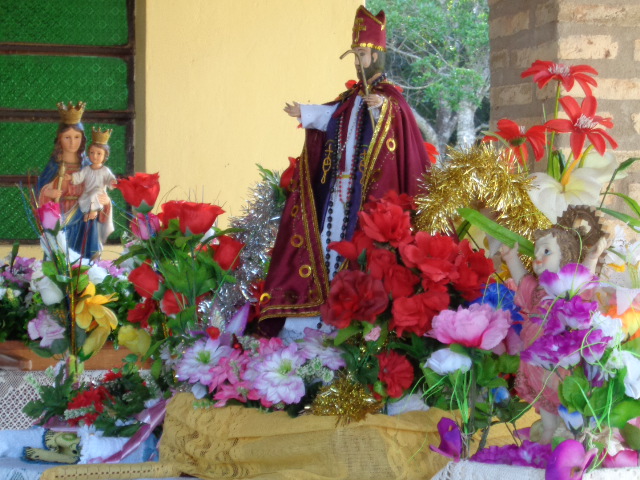Being a very strongly Catholic country the various saints are an important part of Paraguayan culture.
These range from national saints right down to saints of the household. All are venerate with equal conviction.
On a national level the three principal ones are the Virgin Mary, San Blas and San Roque.
The Virgin Mary is venerated in the form of the Virgin of Caacupe. This carved idol is kept in the Basilica of Caacupe.
The Virgin date back to the days when missionaries were first working at converting the native tribes to Christianity.
A local tribesman had a vision of the Virgin and in doing so was hidden from his enemies. Following this miracle he converted and carved the statue in remembrance of the event.
It was placed in his local church but lost when the village was washed away in a flood. Some time later it was rediscovered in Caacupe which is where it now resides.
The feast day for the Virgin of Caacupe is the 8th December. This is the date of the Feast of the Immaculate Conception and is the largest religious festival in Paraguay.
All who can from all across the country travel to Caacupe to celebrate it.
The second principal saint is San Blas. In English he is known as Saint Blaise. San Blas is the national patron saint of Paraguay.
He is venerated in many places across the Christian world and has been since the Middle Ages.
Saint Blaise is a historical figure. He was a bishop and physician in 4th century Armenia. He was martyred in 316 AD.
As he was a physician it is appropriate that amongst other things he is the patron saint of throat infections.
His feast day is the 3rd February. It is a national holiday in Paraguay. It is traditional on that day for families to get together for a banquet of Paraguayan foods.
The final principal saint is San Roque. Again he was an historical figure. His full name was Roque Gonzales y de Santa Cruz. He was born in Asuncion on 17th November 1576.
He became a Jesuit priest and was the first to take their missionary work to the local Guarani.
Roque Santa Cruz worked with the indigenous population for many years, converting them to Christianity and establishing Jesuit Missions.
He was killed while establishing one in Caaro which is now in Brazil on 15th November 1628.
Along with his colleague he was killed on the orders of a local chief who objected to the presence of missionaries in his territory.
It was not until long after his death that Roque Santa Cruz was recognized as a saint. He was not canonized until 1988.
His feast day is the 16th November.
In addition to these every town has its patron saint and their feast day is a local holiday. This often coincides with the annual town parade.
A towns patron saint is generally that for whom the principal church is named.
As with all other saints days a church service is held in their name for the nine days leading up to the feast. Then on the ninth day a mass is held in their honor.
Beyond the town and its principal church every chapel and small church will also be dedicated to a saint and celebrate their feast day.
Furthermore schools and even shops and offices often have their own saints. Thanks is also given to these for the blessings they bring to the institution.
Then on a more intimate level most houses have a small altar set up upon which the figure of a saint stands.
These small household altars are often hung on a wall so that they will not be knocked or disturbed. In addition to the statue of a saint there is often a few photos, some candles and some flowers.
They are often dedicated to San Blas or San Roque but may be dedicated to any saint with whom the family feels an association.
They provide a focus for prayers and their blessings are considered beneficial to the household.
With some many saints to call upon it is almost always a saints day somewhere in Paraguay. Be they a minor or major saint they are all treated with equal reverence.


Recent Comments